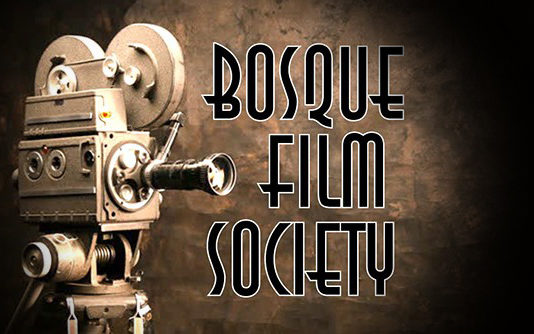Baz Luhrmann’s over-the-top Academy Award winning romantic jukebox masterpiece becomes assault on the senses with screening of the 2001 modern musical “MOULIN ROUGE” at the historic Cliftex Theatre in Clifton
By SIMONE WICHERS-VOSS
Bosque Film Society Founding Board Member
“The greatest thing you will ever learn is just to love and be loved in return.”
Honestly, I am not a fan of musicals, nor am I a fan of Nicole Kidman. So, presenting Baz Luhrmann’s 2001 Moulin Rouge! was not high on my list. But my dear husband convinced me because I do love the Belle Epoque/Fin du Siecle era with all the artists converging on Bohemian Paris – I love the impressionists. And having danced ballet as a young girl, I had prints of Degas’ ballerina paintings all over my wall. I particularly loved his pastel of the ballerina tying her shoe.
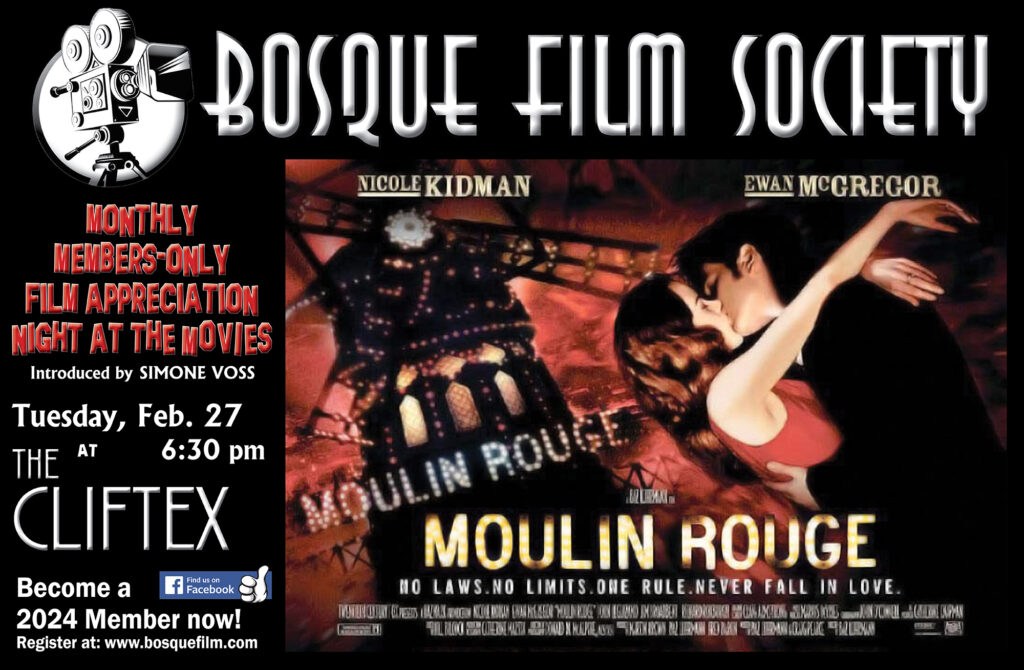 Admittedly, I do very much like Ewan McGregor in the ugly, edgy “Trainspotting” or the BBC’s “Long Way Round” with Charley Boorman on a grueling motorcycle journey from London to New York. But him singing and dancing? I was skeptical. And then again, I had loved the Australian Luhrmann’s quirky Ballroom Dancing and fantastic remake of Romeo and Juliet on the beach, and not to forget the more recent The Great Gatsby and Elvis.
Admittedly, I do very much like Ewan McGregor in the ugly, edgy “Trainspotting” or the BBC’s “Long Way Round” with Charley Boorman on a grueling motorcycle journey from London to New York. But him singing and dancing? I was skeptical. And then again, I had loved the Australian Luhrmann’s quirky Ballroom Dancing and fantastic remake of Romeo and Juliet on the beach, and not to forget the more recent The Great Gatsby and Elvis.
And that exclamation mark behind the nightclub’s name…what’s all that about? But I digress. On reading the reviews it’s apparently because the movie is just over the top spectacular, an assault on the senses. “It’s a wild overwrought, hilarious nut job of a postmodern musical for a new millennium – a movie musical for people (like me) who usually hate movie musicals,” Buffalo News Film Critic Jeff Simon said.
“He constructs ‘Moulin Rouge’ with the melodrama of a 19th century opera, the Technicolor brashness of a 1950s Hollywood musical and the quick-cutting frenzy of a music video,” Chicago Sun Times Film Critic Roger Ebert said of Luhrmann. “Nothing is really ‘period’ about the movie – it’s like a costume revue taking place right now, with hit songs from the 1970s and 1980s (you will get the idea if I mention that Jim Broadbent sings “Like a Virgin”).The movie is all color and music, sound and motion, kinetic energy, broad strokes, operatic excess.”
“The film twists time and space, perspective and proportion, to its own ends,” Associated Press Film Critic David Germain said. “On one level, the movie is the most elaborate and original music video ever made. On another, the film is a simple story of love and loss, cloaked in garish splendor.”
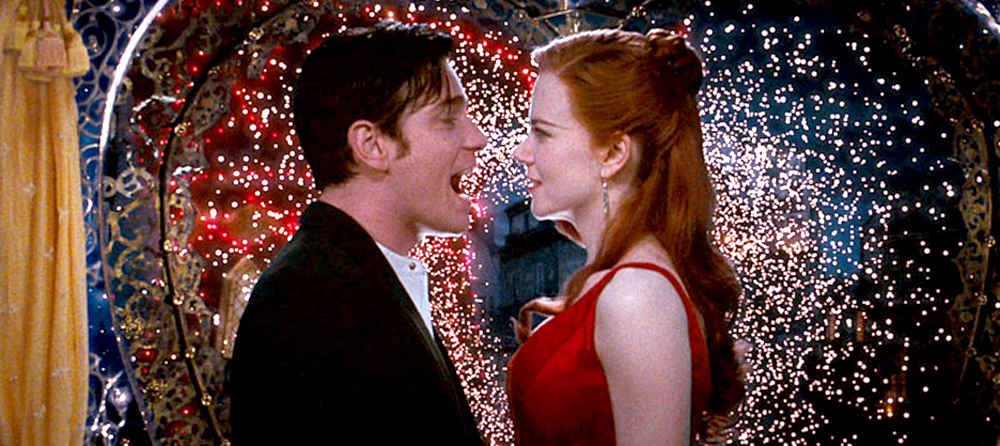 Needless to say, those reviews made me curious. And made me realize how more traditional musical lovers would not like the movie at all. It’s all bravura and boisterousness, exuberant and exciting, and at the same time exhausting – you either find it a feast for the senses or sensory overload. It’s a love it or hate it type of movie, which I love to see and judge for myself.
Needless to say, those reviews made me curious. And made me realize how more traditional musical lovers would not like the movie at all. It’s all bravura and boisterousness, exuberant and exciting, and at the same time exhausting – you either find it a feast for the senses or sensory overload. It’s a love it or hate it type of movie, which I love to see and judge for myself.
“The show will be a magnificent, opulent, tremendous, stupendous, gargantuan bedazzlement,” Moulin Rouge owner Harold Zidler cries to investors. “A sensual ravishment. It will be spectacular, spectacular. No words in the vernacular can describe this great event, you’ll be dumb with wonderment. And on top of your fee, you’ll be involved artistically.
With all those glorious adjectives, Zidler tells the key features of the movie “Moulin Rouge!” but also essential characteristics of the film genre called “Red Curtain Cinema.” The term, coined by director and showman Luhrmann himself, denotes films with a simple narrative set in a heightened, theatric world. Red Curtain Cinema is a cinema of exaggeration and the primary focus of these films is to entertain, enchant and stimulate their audience rather than to depict everyday reality.
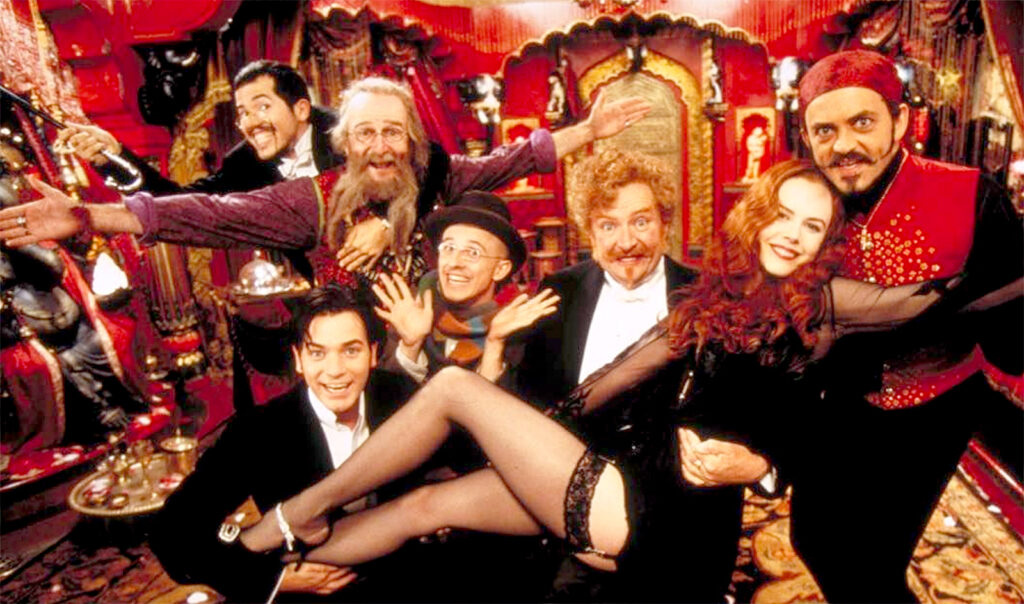 And Moulin Rouge! literally opens and closes with a red curtain shot. In 1890 Paris, a poor, grief-stricken Bohemian writer Christian – played by Ewan McGregor – looks back at the past year of his life. He came to Paris wanting to write about the Bohemian creed truth, beauty, love, freedom. There is one little problem though, he’s never been in love.
And Moulin Rouge! literally opens and closes with a red curtain shot. In 1890 Paris, a poor, grief-stricken Bohemian writer Christian – played by Ewan McGregor – looks back at the past year of his life. He came to Paris wanting to write about the Bohemian creed truth, beauty, love, freedom. There is one little problem though, he’s never been in love.
But all that changes when he meets the ravishing and seductive courtesan Satine – played by Nicole Kidman – at the infamous Paris nightclub/bordello Moulin Rouge. Nowhere is the city’s drug and prostitute-infested underworld more evident and alive than at the Moulin Rouge, a night club in Pigalle where the rich and poor men alike come to be entertained by the Can Can dancers.
In that turn of the century period, these Can Can girls showing their ankles, bloomers and décolletages made the Moulin Rouge equivalent of a sleazy strip joint. In this, no laws, no limits world of excess, Satine though has one rule, “Never Fall In Love.” But against all odds, she of course falls for the talented and charming ecrivain.
To save Christian from being killed by the jealous Duke, who vies for her attention exclusively and who intends to invest in the next show, Satine feigns she does not love him anymore.
“I’m a courtesan, I’m paid to make men believe what they want to believe,” Satine says. In spite of this, Christian loves her “Come What May.”
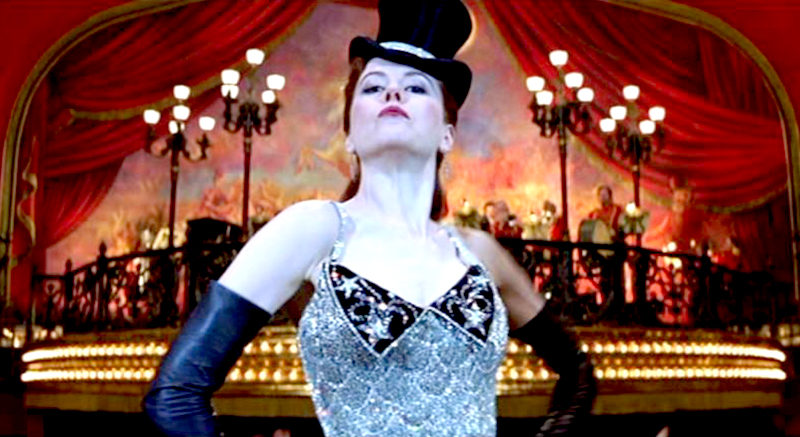 The song “Come What May” was originally written by David Baerwald for Luhrmann’s 1996 “Romeo + Juliet.” It is the only completely original song in the entire film. However, because it was written for another film, it was disqualified for the Oscars’ Best Song award. The song was Included among the American Film Institute’s 2004 list of the top 100 America’s Greatest Music in the Movies.
The song “Come What May” was originally written by David Baerwald for Luhrmann’s 1996 “Romeo + Juliet.” It is the only completely original song in the entire film. However, because it was written for another film, it was disqualified for the Oscars’ Best Song award. The song was Included among the American Film Institute’s 2004 list of the top 100 America’s Greatest Music in the Movies.
The film has incredibly fun arrangements of many known songs like “In the Name of Love,” “The Sound of Music,” Material Girl,“ “One Day I’ll Fly Away,” “Roxanne” and “Lady Marmelade.” It’s great fun trying to recognize all of the tunes, some woven into medleys, like the Elephant Love medley – every song carefully and genially picked to help tell the story. Courtney Love auditioned for Satine, and allowed Luhrmann to use Nirvana’s “Smells Like Teen Spirit” in the opening sequence, a rare case of allowing her late husband Kurt Cobain’s work to be used in film or TV.
In the film, Christian’s upstairs neighbor is artist and painter Henri Toulouse Lautrec – played by John Leguizamo – finances his penchant for the Tremblement de Terre cocktail (the earthquake of absinthe with cognac) with exuberant posters advertising the can-can girls at the Moulin Rouge and Folies Bergère. To give the impression of being as short as his character, Leguizamo acted on special braces, forcing him to walk on his knees. Luhrmann also placed pianist/composer Erik Satie in the mix, who earned a living as a cabaret pianist.
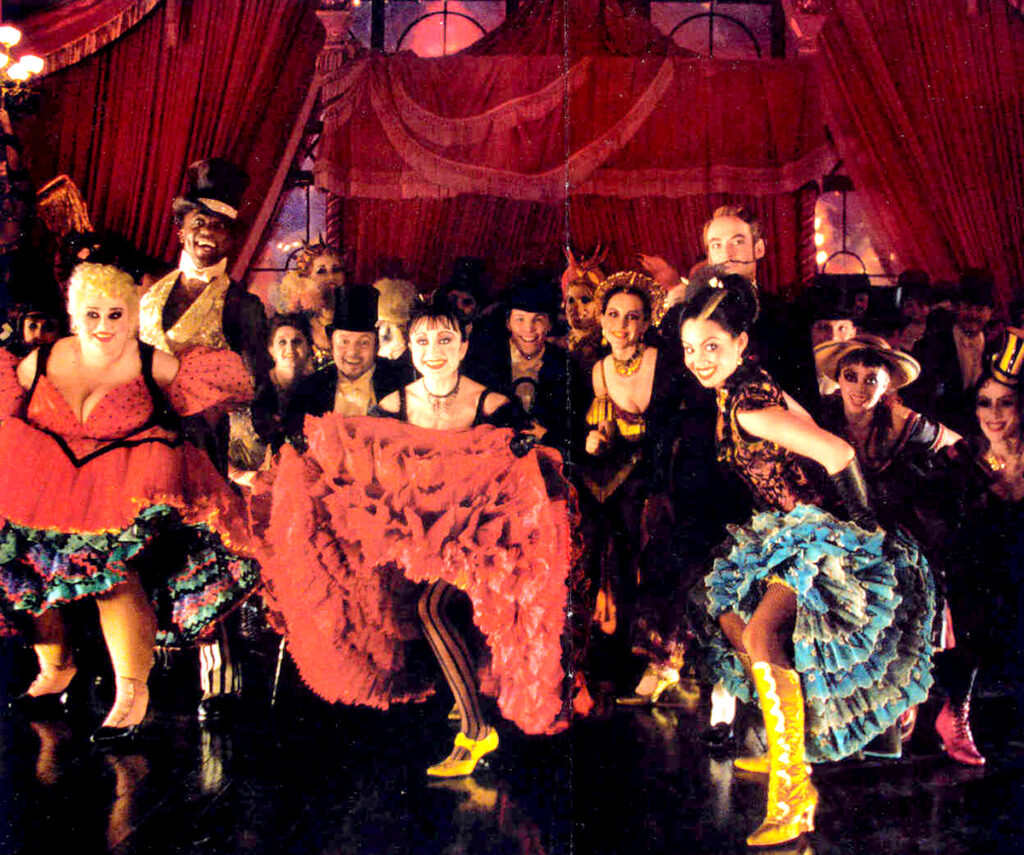 According to Luhrmann, who has an opera background, the film has an Orphean character. The story of Orpheus and Eurydice is a Greek myth of enduring love that has inspired artists, writers and composers for centuries. Christian’s life in Paris resembles Orpheus’ journey into the underworld to retrieve his deceased wife.
According to Luhrmann, who has an opera background, the film has an Orphean character. The story of Orpheus and Eurydice is a Greek myth of enduring love that has inspired artists, writers and composers for centuries. Christian’s life in Paris resembles Orpheus’ journey into the underworld to retrieve his deceased wife.
With his lyre and eloquence, he is able to convince Pluto and Proserpine for her return, under the caveat that he not look at his bride until they reach the upper world. Orpheus cannot contain his anxiety, looks back at Eurydice and she dies once more. Spoiler alert, Christian cannot contain his excitement at hearing Satine’s love for him, only to have her die in his arms from the disease that has consumed her. Love conquers all, except death itself.
Referring to the Opheus/Euridice love story, Montreal Gazette film critic John Griffin said “Moulin Rouge performs the entertainment equivalent of a miracle. It murders the musical, then brings it back to life.”
The Moulin Rouge show being staged in the film mirrors the reality in which Christian, Satine and the Duke find themselves. And it mirrors the storyline of Camille – 1936 movie with Greta Garbo in which a courtesan kept by a nobleman falls for a promising young man. It also happens to be the story of Giuseppe Verdi’s classic opera La Traviata. In the farcical mistaken identity scene, I personally saw the inspiration from two more classic plays — Pierre Beaumarchais’ “Le Marriage de Figaro” and Edmond Rostand’s play “Cyrano de Bergerac.”
Filming took 192 days using 400 costumes for 18 principles and 70 dancers. At one point, 80 people were employed in the costume department.
Nicole Kidman and Ewan McGregor did their own singing in the film. In a Sydney villa, the cast got months of dancing and singing lessons for months in preparation of filming. There, the cast got to try absinthe to get truly in the mood. The start of filming was delayed because Kidman fractured two ribs and injured her knee during rehearsals, and then Luhrmann’s father passed away. The film is dedicated to his memory.
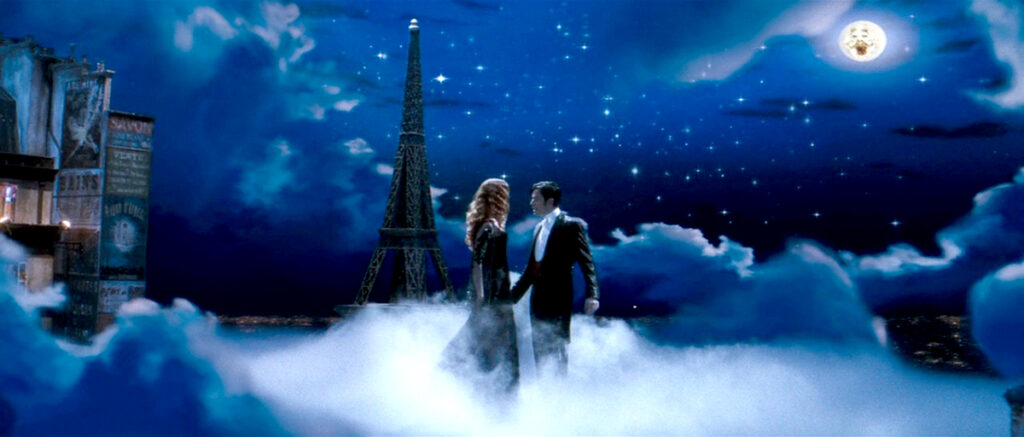
The two hours and seven minutes long movie, rated PG-13 for the sexual content and innuendo, was shot largely at Fox Studios in Sydney, Australia with no location filming at all. There were more than 300 visual effect shots, including the longest digital shot completed as of release. The film took $57 million in America and $175 million worldwide, against a cost of $50 million.
Oh La La! is all I can say. The movie is like the Can Can dancers with frenzied spins, their revealing high kicks, dramatic final splits – you love it or you find it just too gaudy for words. Either way, like Los Angeles Time film critic Kenneth Turan said, “You can go with it or resist it, be exhilarated or worn out. But forgetting the experience is not one of your options.”
And maybe all you’ll remember are Christian’s words about this hopelessly romantic, but tragic love story that “The greatest thing you’ll ever learn is just to love and be loved in return.”
So sit back and be thrilled by this “Gorgeously decadent, massively contrived, and gloriously superficial,” movie, as it was described by Las Vegas Mercury film critic Jeannette Catsoulist.
